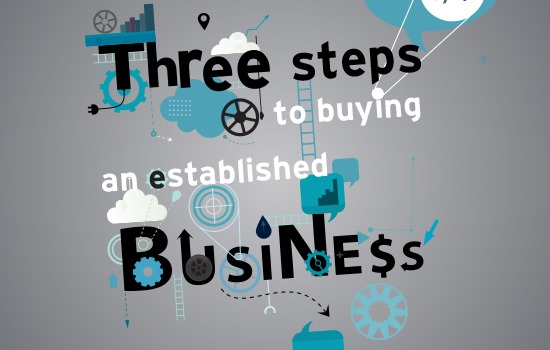
There is much to be said for buying a business that’s already proven, and it does have its advantages over investing in a greenfield business. In most cases, buying an existing business is less risky as you take over an operation that has already generated cash flows and profits. You have an established customer base, reputation and employees who are familiar with all aspects of the business.
On the downside, it is often more costly than starting from scratch and buyers do need to take steps to minimise the risk of inheriting existing problems, financial or otherwise, incurred by the seller.
Andrew Sykes, director of business solutions, RSM Bird Cameron, says “Before buying an existing business be aware of the advantages and disadvantages and the steps to make sure you understand exactly what you are buying and that you don’t pay too much.”
“It is critical that you think about ways to protect yourself from the unknowns associated with buying an existing business. For example, rather than buying the Pty Ltd company, you may buy the assets and trading name and set up a new company. That way you may avoid being caught up with any possible skeletons which may exist in the old company structure.
“Once you have evaluated the benefits and risks, and have found a business that matches your strengths and interests, you must then conduct a thorough examination of the business opportunity which is a formal process called due diligence. The due diligence process focuses on the key factors likely to affect the decision to proceed with the purchase and that affect the price paid.”
Three steps to purchase
1.Investigate
Find out why the business is for sale. One of the primary reasons businesses are sold is because they are failing in some way or simply do not produce sufficient profit for owners. By gathering as much information as possible about the business, you should be able to pinpoint its weaknesses. Question whether or not the business has potential for future growth and what some of its prospective shortcomings might be.
Whether you want to acquire a service, retail, manufacturing or wholesale business, be sure to analyse the industry market as well. Determine the current industry trends and who its customers are as well as the stage of the business life cycle and sustainability of the current business model.
Think long and hard about the types of businesses you’re interested in and which best match your skills and experience.
2. Evaluate
Evaluate all aspects of the business such as location, management, goodwill, inventory, customer base, suppliers, equipment, employees, legal contracts and financial records.
It is important to assess the company’s reputation and the strength of its business relationships. Talk to existing customers, suppliers and vendors about their relationships with the business.
You may also decide to consult a business advisor experienced in conducting due diligence processes whose expertise will focus on your interests and help to reduce the risk of overlooking important details.
When due diligence is done, you will know just what you are buying and from whom.
3. Negotiate
When you have thoroughly investigated and assessed the value of the business, you can begin to negotiate a price with the seller. It is important to document all communications and representations to make sure that both you and the seller are clear on what is being negotiated and what is included and excluded in the sale (for example, existing inventory).
As most sellers determine the price for their business arbitrarily or through an industry specific formula, it is often the party who comes most prepared to the negotiations which will end up with the most leverage.
Andrew Sykes says “Once you have undertaken due diligence and even before the contract is signed it is critical to start talking to key employees, customers and suppliers before you take over; tell them about your plans and ideas for the business’s future.
Implement an internal communication and change management strategy as this will ensure a smooth transition for existing employees and help you retain them in long-term.
For more information, contact: Andrew Sykes, Director RSM Bird Cameron
02 6217 0300 rsmi.com.au
With RSM Bird Cameron you really are… Connected for Success
